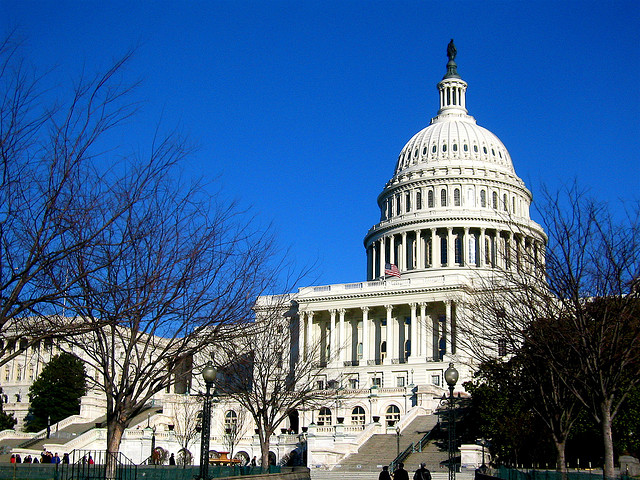On 6 October, Russian warships on the Caspian Sea fired 26 medium range cruise missiles at 11 targets in Syria. Washington has protested that these strikes have not only struck the forces of the self-declared ‘caliphate’ but also ‘moderate’ Syrian rebel groups. US Secretary of Defense Ash Carter has argued since that by entering the conflict on the side of the Assad regime Moscow is ‘tethering’ itself to ‘a sinking ship of a losing strategy’.
While Carter’s assessment of Russia’s approach may well prove to be correct, it’s clear that Washington’s approach has already proven to be a losing one.
Central to this failure has been Washington’s inability to construct a ‘solvent’ strategy whereby, to paraphrase Walter Lippmann, commitments accurately reflect US vital interests and don’t exceed US capabilities to protect or prosecute those interests.
Since August 2011 the Obama administration has maintained that while only Assad’s removal will resolve the crisis, the ‘United States cannot and will not impose this transition upon Syria.’ Rather, Washington has sought this indirectly through the imposition of sanctions and provision of support to anti-Assad forces.
The ‘Assad must go’ rhetoric and this indirect strategy has led the administration astray.
First, it has permitted a number of regional players such as Turkey, Saudi Arabia and the Persian Gulf monarchies to sponsor their own often jihadist proxies in Syria. Unsurprisingly, their actions have been guided by their own individual interests first and their strategic alignment with the US a distant second.
Second, the expansion of IS prompted the administration to give ‘teeth’ to its indirect strategy by prosecuting an ongoing air campaign to ‘dismantle and degrade’ it and developing a program to vet, train and equip ‘moderate’ Syrian rebels.
The former was designed to weaken IS offensive capabilities and allow local anti-IS forces to take the initiative. The problem in Syria (PDF) has been that ‘the secular rebel groups vetted by the United States are divided, weak and unlikely…to augment US-led operations from the air.’
The latter initiative has been underwhelming. After admitting in July that it’s US$500 million training program had yielded only 60 ‘moderate’ rebels, the administration cancelled the program in early October to focus instead on identifying acceptable Syrian rebels ‘already on the battlefield’.
The crucial problem bedevilling the Obama administration and the political class in Washington as a whole is that their core goal in the Syrian crisis—the removal of Assad—is not aligned with either US vital interests in the Middle East or the capabilities that the US is willing to deploy to achieve them.
Two central questions arise here.
First, does the continued existence of the undeniably odious regime in Damascus imperil vital US interests in the Middle East, let alone US national security? In answering this question, they would do well to recall that the current dilemmas Washington faces in Syria ‘stem not from the mere existence of the Assad regime but instead from the war that emerged from confrontation between the regime and its opponents’. Additionally, the actions of the US and its allies have arguably helped to perpetuate it.
Or second, does the emergence of IS, a movement bent on the destruction of the territorial and political order of the contemporary Middle East, constitute the preeminent threat to US interests in the region? In September 2014 President Obama appeared to signal the administration’s belief that it did in fact constitute such a threat.
Since then Washington has pursued a contradictory strategy. On the one hand it has argued that the Assad regime’s continued existence is the ‘magnet’ that attracts foreign fighters to IS, while on the other it has declined to revise its position that Assad’s removal is the precondition for a political resolution to the Syrian civil war.
As Paul Pillar has argued, this ignores the fact that ‘the untoward effects of this war will be ameliorated only insofar as peace is established in Syria…It is the continuation of the war, much more than any particular outcome of the war or any particular political configuration of Syria, that is the source of most of the trouble that is worth worrying about’.
This failure is shared by Obama’s Republican critics. Indeed, the alternatives offered by Republicans divorce further the relationship between commitment, interests, and capabilities that should underpin sound strategy.
Jeb Bush has argued that ‘defeating ISIS requires defeating Assad, but we have to make sure that his regime is not replaced by something as bad or worse’, while others are bedevilled by wilful obfuscation of the dynamics at play with respect to Syria and IS. In February Marco Rubio asserted that Obama hadn’t implemented a military strategy to combat IS as he ‘doesn’t want to upset Iran’. That ignores the fact that Washington and Tehran’s interests are aligned when it comes to combatting IS.
It’s difficult to disagree with Michael Brendan Dougherty’s assessment that the majority of the GOP primary contenders have argued for a fairy-tale strategy on Syria that will somehow ‘defeat everyone at once, at low cost, without ugly alliances, and to the benefit of unnamed good guys’.
Russia’s intervention in the crisis has served to reveal the inability of the current administration and its Republican alternatives to bring US commitments into alignment with what are deemed to be its vital interests in the Middle East.


